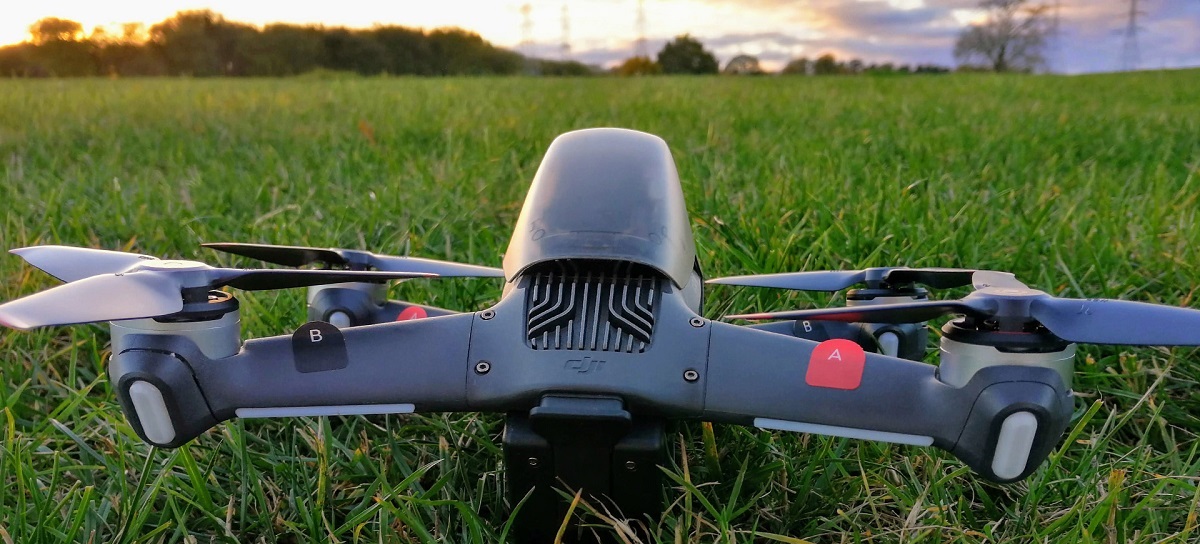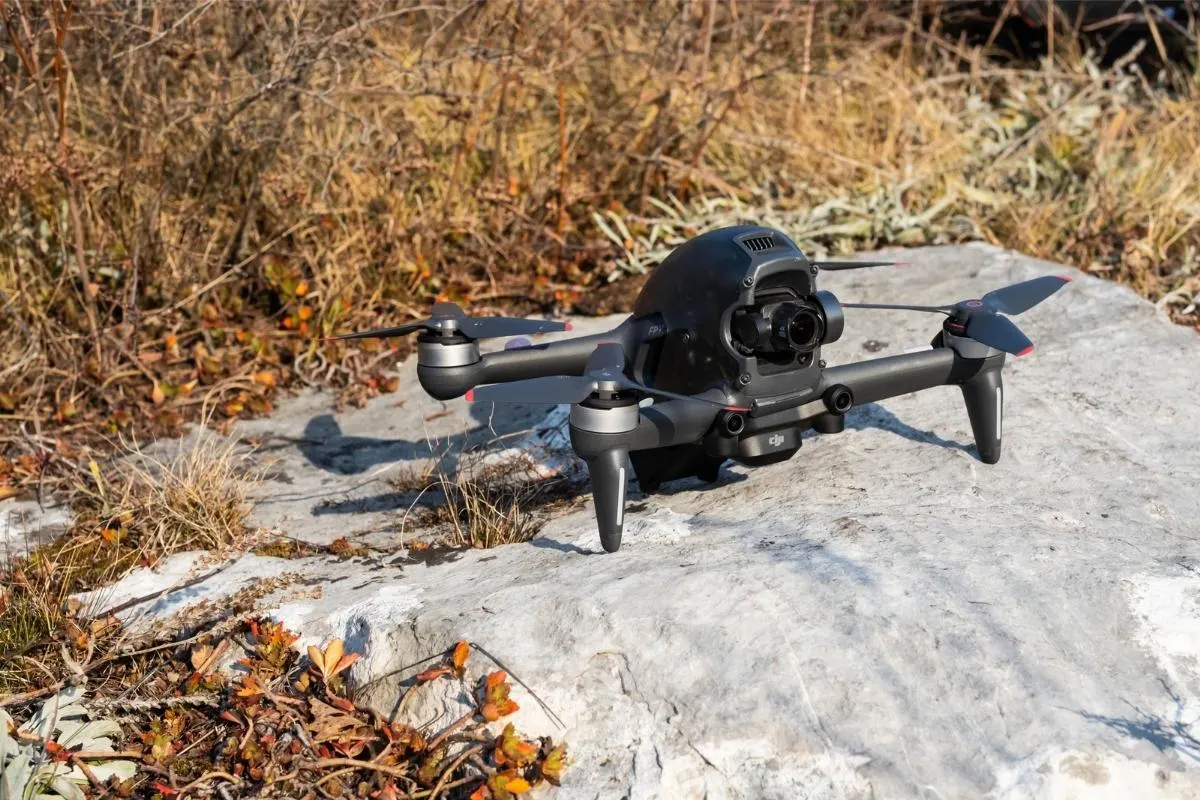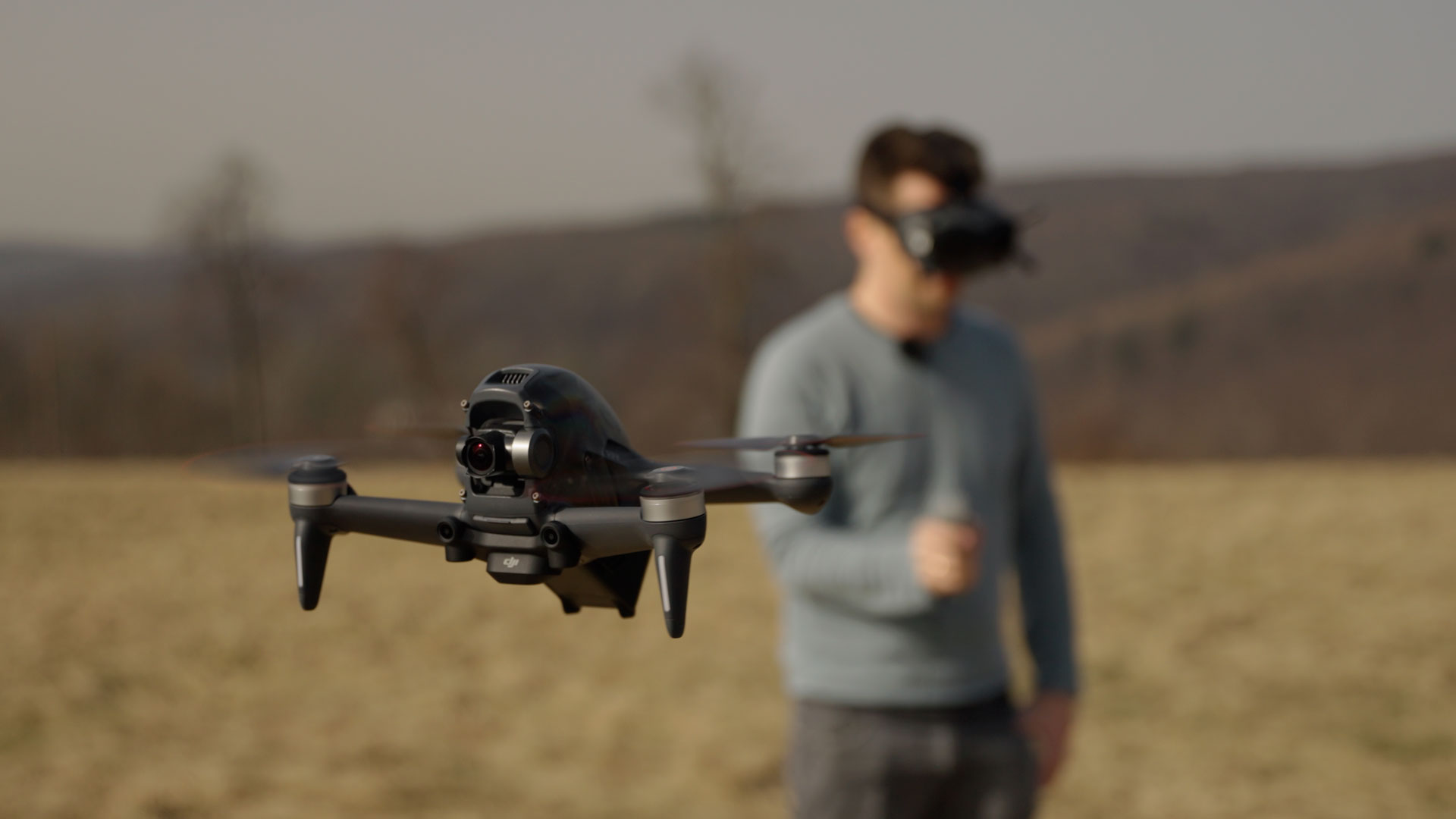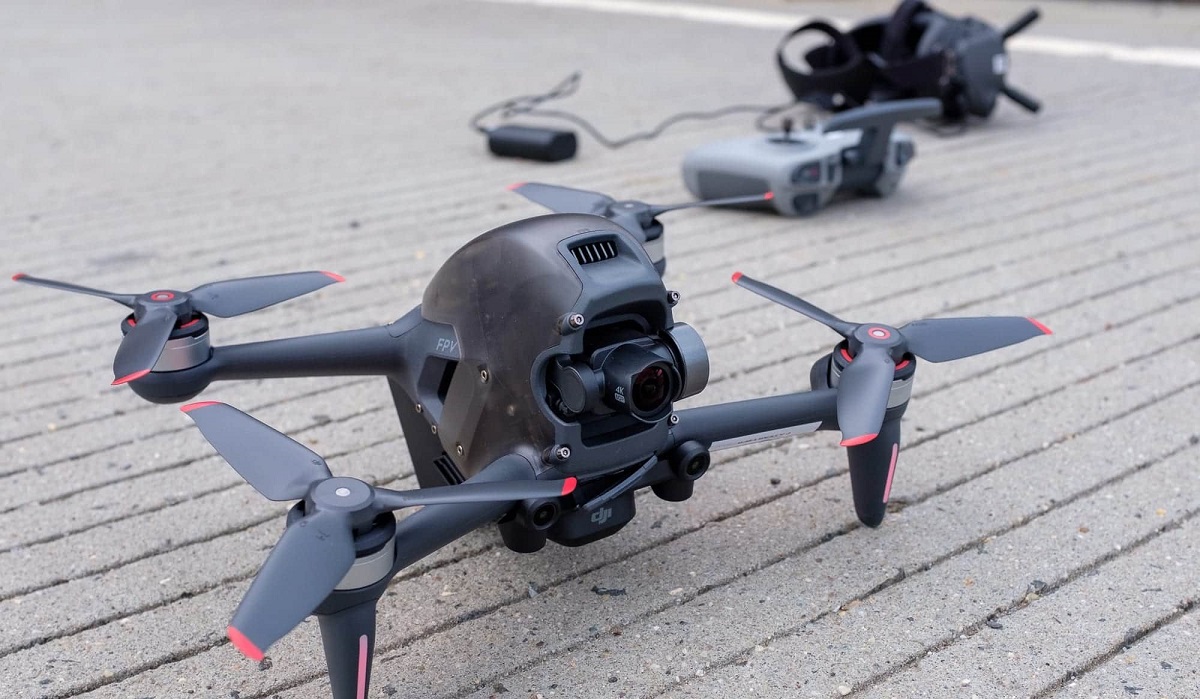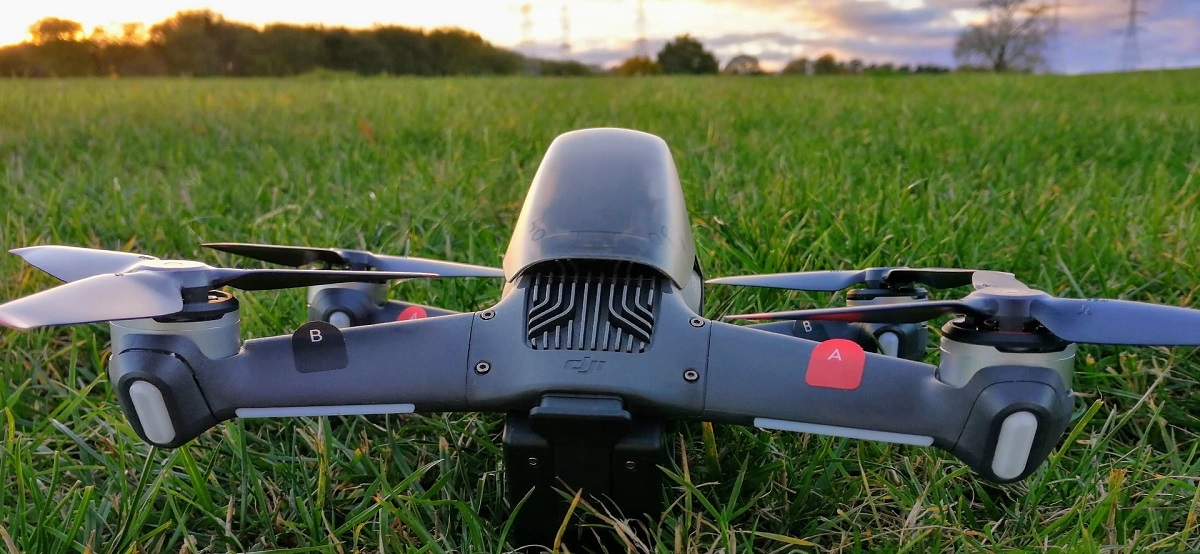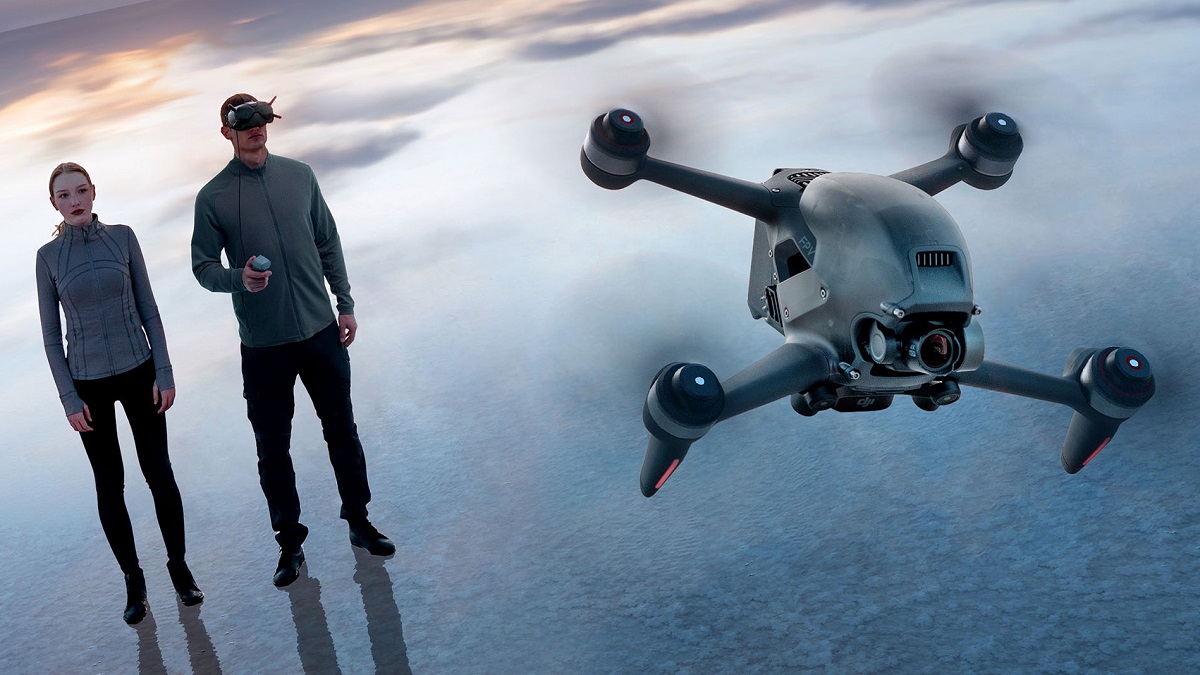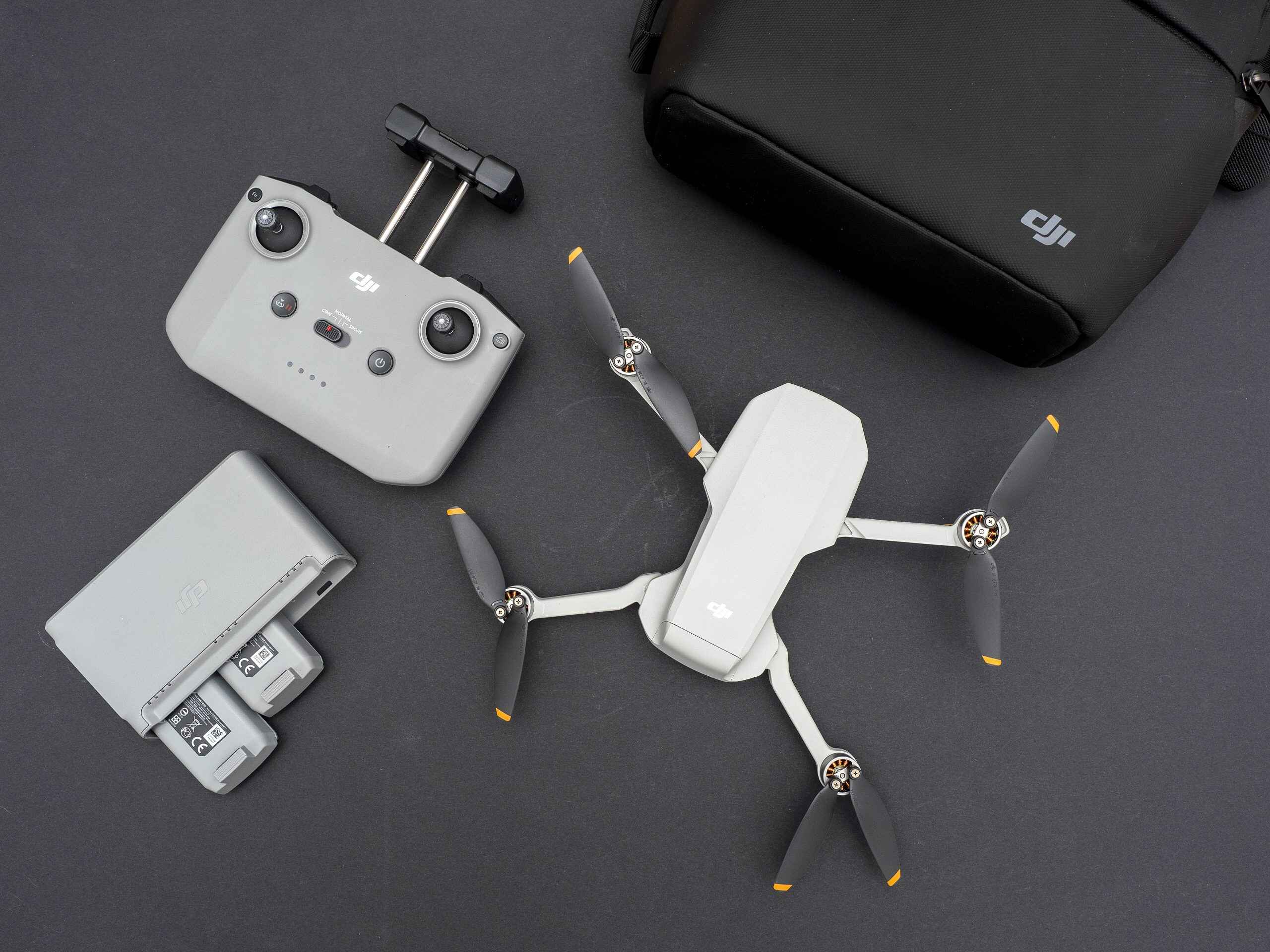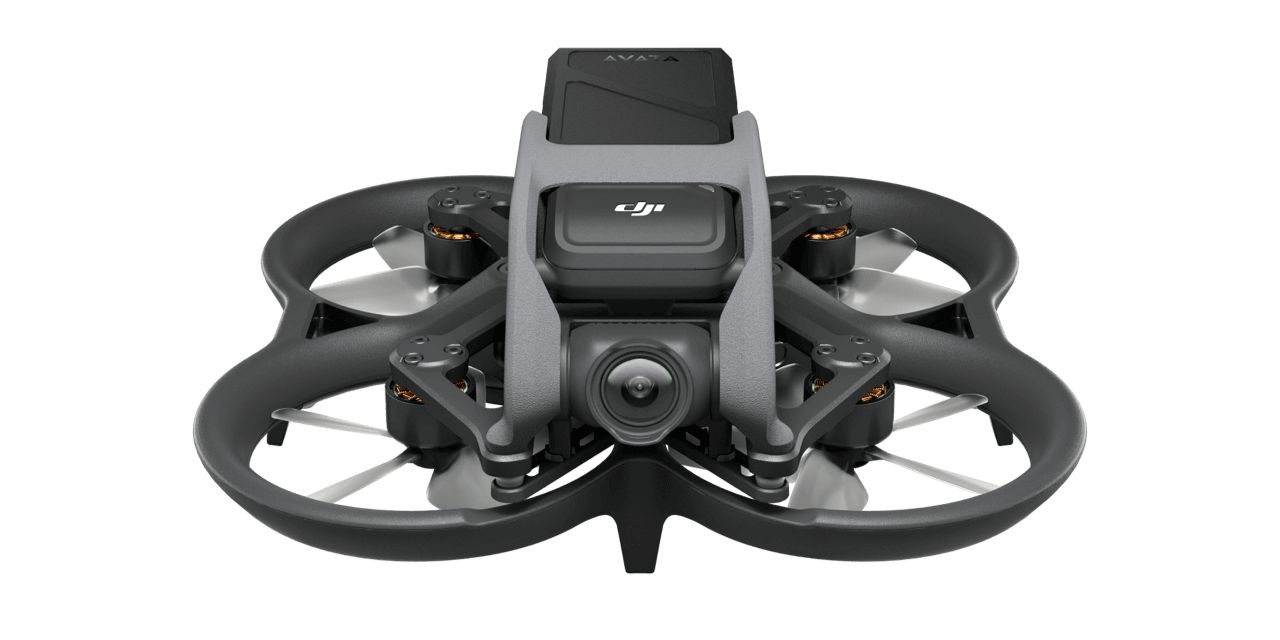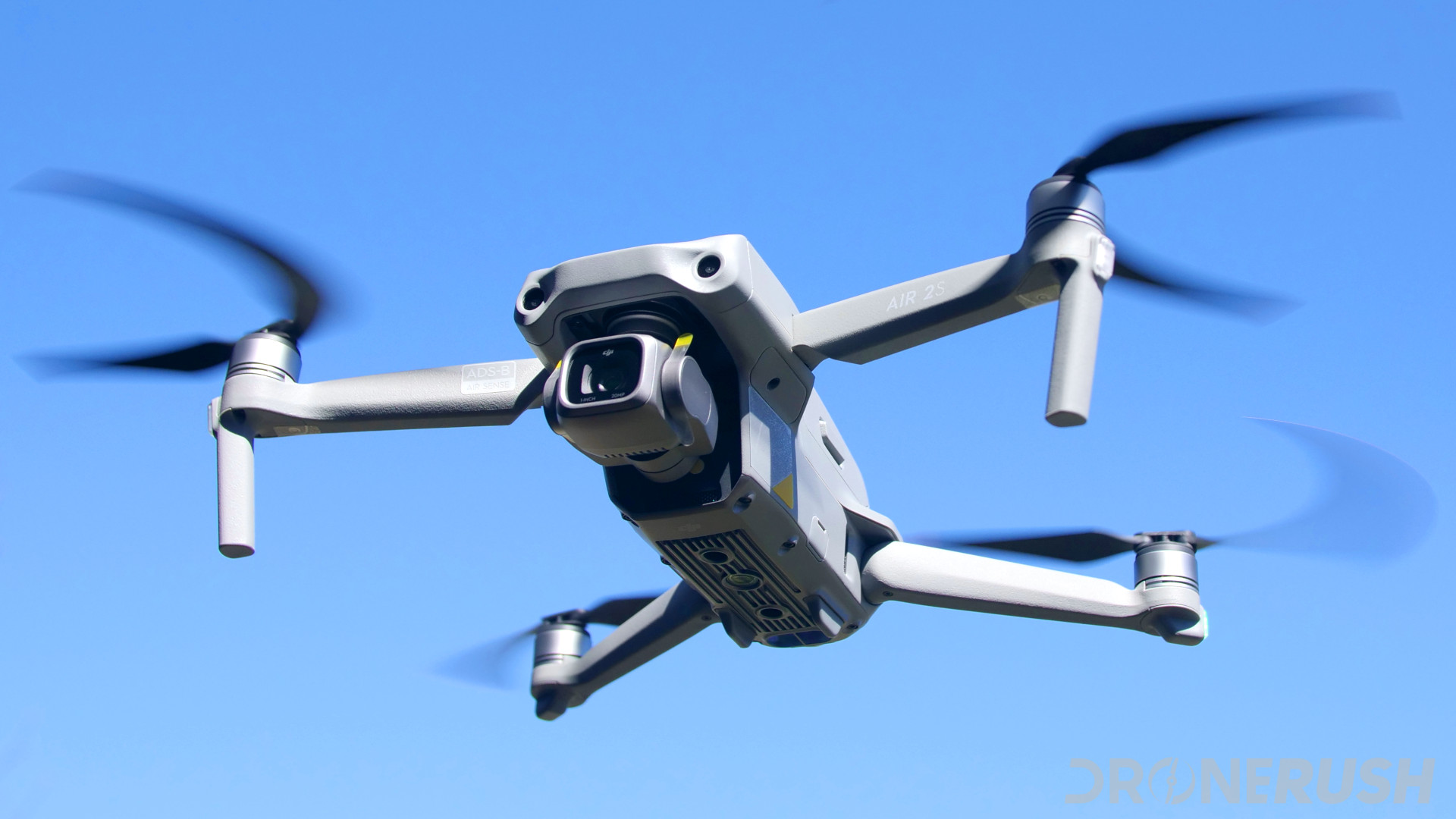Introduction
Welcome to the thrilling world of the DJI FPV drone! As technology continues to push the boundaries of what is possible, the experience of flying drones has reached new heights with this innovative device. The DJI FPV drone, designed for first-person view (FPV) flight, offers an exhilarating and immersive flying experience that is a dream come true for drone enthusiasts and adrenaline junkies alike.
In this article, we dive into the world of the DJI FPV drone to explore its capabilities, with a particular focus on its speed. We will discuss the various factors that contribute to its top speed, touch on real-world speed tests, consider the balance between speed and maneuverability, and highlight important safety factors to consider when flying this fast-paced machine.
Whether you are a drone enthusiast looking to learn more about this cutting-edge technology or an individual considering purchasing the DJI FPV drone for their next adventure, this article aims to provide you with a comprehensive understanding of its speed capabilities and what to expect when taking to the skies.
Understanding the DJI FPV Drone
Before we dive into the speed capabilities of the DJI FPV drone, let’s take a moment to understand what sets it apart from other drones in the market. The DJI FPV drone is specifically designed to provide an immersive and exhilarating first-person flying experience that combines the thrill of racing drones with the ease of use and advanced features of DJI drones.
One of the standout features of the DJI FPV drone is its hybrid design, offering the flexibility of both manual and automated flight modes. This means that both experienced pilots and beginners can enjoy flying this drone, with the ability to switch between modes based on their skill level and preference.
The FPV part of the drone’s name refers to the first-person view system that provides a real-time live video feed from the drone’s camera to the pilot’s goggles. This FPV system offers an immersive flying experience, giving pilots a sense of actually being in the cockpit of the drone. The low-latency transmission ensures that there is minimal lag between the drone’s movements and what the pilot sees, enhancing the overall sense of control and immersion.
The DJI FPV drone also boasts impressive flight capabilities, including high-performance motors, advanced sensors, and intelligent flight modes. These features work together to provide a smooth and stable flight experience, allowing pilots to navigate tight spaces, perform impressive aerobatic maneuvers, and capture breathtaking aerial footage.
Moreover, the DJI FPV drone is equipped with obstacle detection and avoidance sensors, ensuring a safe flying experience even when cruising at high speeds. These sensors help to detect and navigate around obstacles in the drone’s flight path, reducing the risk of collisions and enabling pilots to focus on the joy of flying.
With its unique design and advanced flight features, the DJI FPV drone is a game-changer in the world of drones, offering an unparalleled flying experience that combines speed, agility, and breathtaking visuals.
The Need for Speed
Speed is a fundamental aspect of the DJI FPV drone that adds an extra thrill to the flying experience. Whether you’re racing against other pilots or exploring the skies at high velocities, the need for speed is a common desire among drone enthusiasts.
One of the main reasons why speed is so significant in the world of FPV drones is the adrenaline rush it provides. Flying at high speeds offers an exhilarating experience that can give pilots a real sense of adventure and excitement. It’s the feeling of pushing the limits and experiencing the sheer power and agility of the drone.
Another reason why speed is important is for achieving impressive aerial footage. When capturing dynamic shots or fast-moving subjects, having a drone that can fly at high speeds allows photographers and videographers to get smooth and cinematic shots. The ability to quickly position the drone and follow the action can make a significant difference in the quality of the final footage.
Furthermore, speed is crucial in drone racing. FPV drone racing has gained tremendous popularity in recent years, with pilots competing in high-speed races, maneuvering through challenging obstacles and tight courses. The ability to reach top speeds and navigate swiftly is vital to outperform competitors and secure victory.
For those less interested in racing, speed still matters when it comes to exploration and scouting. Being able to cover large areas quickly can be beneficial in various scenarios, such as surveying landscapes, inspecting infrastructure, or searching for lost objects.
Ultimately, the need for speed in the DJI FPV drone is driven by the desire for excitement, capturing stunning footage, participating in drone racing events, and achieving efficient exploration. The drone’s high-speed capabilities open up a world of possibilities and expand the horizons of what can be achieved with aerial technology.
Key Features that Affect Speed
The speed of the DJI FPV drone is influenced by a combination of its design and specific features that contribute to its performance. Understanding these key features can give us insights into what enables the drone to achieve its impressive speeds.
Firstly, the DJI FPV drone is equipped with high-performance motors. These powerful and efficient motors generate the thrust needed to propel the drone through the air at high speeds. The precision engineering and high RPM (Rotations Per Minute) of these motors ensure optimal performance and responsiveness.
Secondly, the aerodynamic design of the drone plays a crucial role in its speed capabilities. The sleek and streamlined body, along with the strategically placed air vents and propeller guards, reduces wind resistance and drag, allowing the drone to cut through the air with minimal resistance. This aerodynamic design helps to maximize the drone’s speed potential.
Another key feature that affects speed is the weight of the drone. The DJI FPV drone is designed with lightweight materials, such as carbon fiber and durable plastics, to minimize weight while maintaining structural integrity. The lighter the drone, the easier it is for the motors to propel it through the air, resulting in higher speeds and improved maneuverability.
The propellers of the DJI FPV drone are specifically designed to optimize efficiency and generate more thrust. The shape, size, and pitch of the propellers contribute to the overall performance and speed of the drone. These propellers are carefully balanced to ensure smooth operation and minimize vibrations, which can impact speed and stability.
Additionally, the flight controller and electronic speed controllers (ESCs) in the DJI FPV drone play a critical role in managing and optimizing power delivery to the motors. The flight controller’s algorithms and the ESCs’ ability to rapidly adjust motor speeds ensure precise control and responsiveness, allowing the drone to accelerate quickly and maintain stability at high speeds.
Lastly, the battery used in the DJI FPV drone is a vital component that influences speed. A high-capacity and high-discharge rate battery can deliver the necessary power to the motors, enabling the drone to reach its top speeds. The DJI FPV drone utilizes intelligent battery technology that provides optimal power output and management, ensuring efficient and prolonged flights.
By considering these key features, it becomes evident that the speed of the DJI FPV drone is the result of a well-thought-out combination of motor power, aerodynamic design, weight optimization, propeller efficiency, flight controller algorithms, and battery performance.
How Fast Can It Go?
The DJI FPV drone is renowned for its impressive speed capabilities, allowing pilots to experience the thrill of high-speed flight. So, just how fast can this drone go?
The maximum speed of the DJI FPV drone is advertised at an impressive 87 mph (140 km/h) in manual mode. This speed puts it in a league of its own when compared to many other consumer drones on the market. Pilots have reported exhilarating experiences as they push the drone to its limits and feel the rush of speed.
However, it’s important to note that the maximum speed may vary based on several factors. Flight conditions, including wind speed and direction, can affect the drone’s speed and stability. Flying in ideal weather conditions with no or minimal wind will likely result in higher speeds compared to flying in strong gusty winds.
Another factor that may influence the drone’s top speed is the altitude at which it is flown. Higher altitudes can introduce thinner air, reducing the aerodynamic performance of the drone and potentially limiting its top speed. It’s worth noting that the DJI FPV drone has a maximum service ceiling of 6,000 meters (19,685 feet), allowing for high-altitude flights while still maintaining stable control.
Furthermore, the speed of the DJI FPV drone can be affected by the flight mode selected. The drone offers different flight modes, including Normal, Manual, and Sport Mode. In Sport Mode, the drone unleashes its full speed potential, allowing pilots to experience the maximum advertised speed. However, it’s important to exercise caution and ensure that you have the necessary skills and experience to handle the drone at high speeds.
It’s also worth noting that the speed displayed on the controller or in the user interface may not always match the actual ground speed of the drone. The displayed speed is typically based on the drone’s GPS calculations, which may not always accurately reflect the true speed due to various factors.
Despite these considerations, the DJI FPV drone’s speed capabilities are undeniably impressive. Whether you’re looking to race at high speeds, capture dynamic footage, or simply experience the thrill of flying fast, this drone delivers an exhilarating and immersive experience that pushes the boundaries of what is possible in consumer drones.
Factors that Influence Top Speed
The top speed of the DJI FPV drone can be influenced by various factors that come into play during flight. Understanding these factors can help pilots optimize their flying experience and achieve the maximum speed potential of the drone.
One crucial factor that can impact the top speed is the flight mode selected. The DJI FPV drone offers different flight modes, including Normal, Manual, and Sport Mode. Sport Mode is specifically designed for high-speed flying, allowing pilots to unlock the full speed capabilities of the drone. Selecting this mode ensures that the drone’s motors and flight controllers are operating at their maximum potential for speed.
Another factor that influences top speed is the drone’s weight. As with any flying object, the heavier the load, the more effort it takes for the drone to achieve higher speeds. Pilots can optimize the speed performance by ensuring that unnecessary accessories, such as additional cameras or propeller guards, are removed when seeking maximum speed.
The environmental conditions, particularly wind speed and direction, also play a significant role in determining the drone’s top speed. Flying against strong headwinds can significantly reduce the ground speed of the drone, while tailwinds can enhance its speed. It’s advisable to track weather conditions and plan flights accordingly to maximize speed performance.
The altitude at which the drone is flown can also influence its top speed. At higher altitudes, the air density decreases, which affects the drone’s aerodynamic performance. The thinner air can reduce the ability of the drone to generate lift and propulsion, consequently impacting its top speed. Pilots should consider this when aiming for maximum speed and adjust their expectations accordingly.
Additionally, the battery life of the drone can affect its speed performance. As the battery drains during flight, the power output to the motors may decrease slightly, affecting the overall speed. It’s advisable to start with a fully charged battery to ensure optimal speed and performance throughout the flight.
Lastly, the skill and experience of the pilot play a crucial role in achieving the top speed of the DJI FPV drone. Pilots with more experience and proficiency in flying at high speeds can navigate the drone more confidently, making adjustments and controlling it with precision. Practice and familiarity with the drone’s controls are essential for maximizing its speed capabilities.
Considering these various factors and optimizing them to the best of your ability will help you unlock the full speed potential of the DJI FPV drone and enjoy the thrilling experience it offers.
Real-world Speed Test Results
When it comes to determining the real-world speeds of the DJI FPV drone, many factors come into play. While the advertised top speed is 87 mph (140 km/h), it’s essential to look at real-world speed test results to get a better understanding of the drone’s performance.
Various drone enthusiasts and reviewers have conducted speed tests to put the DJI FPV drone through its paces.
In these tests, the drone consistently delivered impressive results, often reaching speeds close to or at the advertised maximum. However, it’s important to note that real-world conditions, including wind speed, temperature, and battery state, can influence these results.
Reviewers have achieved speeds ranging from 70-80 mph (112-128 km/h) during their tests. These speeds demonstrate the drone’s ability to reach fast and exhilarating velocities, providing pilots with an adrenaline-pumping flight experience.
It’s worth mentioning that reaching the maximum speed requires the pilot to have full control over the drone and carefully consider various flight conditions. Understanding and utilizing the drone’s different flight modes, such as Sport Mode, can help pilots reach the desired speed.
Additionally, the drone’s battery level and drone weight impact these real-world speed test results. Ensuring proper battery management and flying the drone without unnecessary accessories can maximize its speed potential.
Some real-world speed test results may vary slightly from the advertised top speed due to environmental and flight conditions. The presence of wind, for example, can create resistance and affect the drone’s speed. Therefore, it’s important for pilots to consider these factors when aiming for top speeds.
Overall, the DJI FPV drone, through various real-world speed tests, has consistently proven its ability to deliver impressive speed performance. The drone’s high-speed capabilities make it a thrilling choice for drone racing enthusiasts, adventure seekers, and content creators looking to capture dynamic footage at high velocities.
Speed vs. Maneuverability
When it comes to flying drones, finding the right balance between speed and maneuverability is crucial. While speed offers an exhilarating and adrenaline-fueled experience, maneuverability is essential for precise control and navigating challenging flight paths.
Speed is one of the key selling points of the DJI FPV drone, allowing pilots to fly at high velocities and experience the thrill of fast-paced flight. The drone’s ability to reach impressive speeds adds a new level of excitement and adventure to the flying experience, particularly for drone racing enthusiasts.
On the other hand, maneuverability ensures that pilots can maintain control and navigate through various obstacles and flight scenarios. The DJI FPV drone excels in this aspect as well, offering exceptional agility and responsiveness. Its advanced flight modes and intelligent flight controllers allow pilots to perform intricate flight maneuvers, including sharp turns, flips, and rolls.
While speed and maneuverability may seem like opposing factors, they actually go hand in hand to provide a well-rounded flying experience. The high-speed capabilities of the DJI FPV drone enable pilots to cover large distances swiftly and capture captivating footage. Meanwhile, its maneuverability ensures that pilots can navigate tight spaces, perform precise maneuvers, and avoid obstacles with ease.
Pilots can leverage the different flight modes available on the DJI FPV drone to find the right balance between speed and maneuverability based on their preferences and the specific flight scenario. For example, switching to Sport Mode allows pilots to unlock the drone’s full speed potential, whereas switching to Normal or Manual Mode provides finer control for intricate movements and precise flight paths.
It’s worth noting that as the speed increases, maneuverability may be slightly compromised. Flying at high speeds requires more space for turning and deceleration, and pilots need to account for this when planning their flight route. Therefore, finding the right balance between speed and maneuverability involves understanding the trade-offs and adjusting the flying style accordingly.
Ultimately, the DJI FPV drone offers a harmonious balance between speed and maneuverability, allowing pilots to push the limits of speed while maintaining precise control. This combination opens up new possibilities for capturing breathtaking aerial footage, participating in exhilarating races, and experiencing the thrill of fast-paced flight.
Safety Factors to Consider
While the DJI FPV drone offers an exhilarating and high-speed flying experience, it’s important to prioritize safety to ensure a smooth and enjoyable flight. Here are some key safety factors to consider when flying the DJI FPV drone:
1. Familiarize Yourself with the Drone: Before taking the drone to the skies, make sure you thoroughly read and understand the user manual. Familiarize yourself with the controls, flight modes, and safety features to ensure a safe and controlled flight experience.
2. Location and Environment: Choose a suitable flying location away from crowded areas, airports, and other no-fly zones. Ensure you have enough open space to maneuver the drone safely and maintain line-of-sight at all times. Be mindful of trees, power lines, and other obstacles that may pose a collision risk.
3. Weather Conditions: Keep a close eye on weather conditions before and during the flight. Avoid flying in strong winds, heavy rain, or adverse weather conditions that can affect visibility and the performance of the drone. Strong winds can impact stability and control, potentially leading to accidents.
4. Flight Planning and Pre-flight Checks: Plan your flight path in advance and conduct thorough pre-flight checks. Ensure that the drone’s battery is sufficiently charged, all components are securely connected, and the firmware is up to date. Perform a complete systems check, including the motors, propellers, and flight controls to identify any issues before takeoff.
5. Battery Management: Monitor the battery level and set a safe return-to-home (RTH) point to avoid running out of power mid-flight. Pay attention to low battery warnings and bring the drone back to a safe landing area before the battery becomes critically low.
6. Safety Gear and Equipment: Wear appropriate safety gear, such as goggles, to protect your eyes during the FPV experience. It’s also advisable to use propeller guards and other protective accessories to minimize the risk of injuries and damage to the drone and surrounding objects.
7. Respect Privacy and Regulations: Always adhere to local drone regulations and respect people’s privacy. Avoid flying over private property without permission and be mindful of your surroundings to ensure a safe and responsible flight experience.
8. Pilot Skills and Training: Develop your piloting skills through practice, training, and familiarization with the drone’s flight characteristics. Start with slower flying speeds and gradually increase the speed as you gain confidence and proficiency in handling the drone at higher velocities.
9. Emergency Procedures: Familiarize yourself with the emergency procedures outlined in the user manual. Be prepared to react quickly and follow the appropriate steps in case of unexpected situations, such as flyaways, loss of control, or signal interference.
Remember, your safety and the safety of others should always be the top priority when flying the DJI FPV drone. By taking these safety factors into consideration and maintaining a responsible approach to flying, you can enjoy the exciting and high-speed capabilities of the drone while minimizing risks and ensuring a safe and enjoyable experience.
Conclusion
The DJI FPV drone is an incredible piece of technology that brings together the thrill of speed, the immersion of first-person view (FPV) flying, and the precision of DJI’s renowned flight capabilities. With its impressive top speed capabilities, intuitive controls, and advanced safety features, the DJI FPV drone offers a captivating and exhilarating flying experience.
Throughout this article, we have explored various aspects of the DJI FPV drone, including its design, speed capabilities, factors that influence speed, real-world speed test results, the balance between speed and maneuverability, and important safety considerations.
The DJI FPV drone’s top speed of 87 mph (140 km/h) in manual mode delivers an adrenaline rush and opens up new possibilities for drone racing, aerial photography, and exploration. However, achieving maximum speed requires considerations such as flight modes, battery life, environmental factors, and pilot skills.
Moreover, the DJI FPV drone strikes a balance between speed and maneuverability. While the drone’s high-speed capabilities offer excitement and the ability to cover large distances, its maneuverability ensures precise control and the agility needed to navigate through obstacles and capture stunning footage.
Safety is of utmost importance when flying the DJI FPV drone. Pilots must prioritize proper flight planning, pre-flight checks, understanding drone regulations, and maintaining situational awareness. By following safety guidelines and taking necessary precautions, pilots can enjoy the thrills of high-speed flight while minimizing risks to themselves and others.
In conclusion, the DJI FPV drone is a remarkable device that brings together speed, maneuverability, and safety in a seamless package. Whether you’re a drone racing enthusiast, a content creator, or simply an adventure seeker, the DJI FPV drone offers an unmatched flying experience that pushes the boundaries of what is possible with consumer drones.







